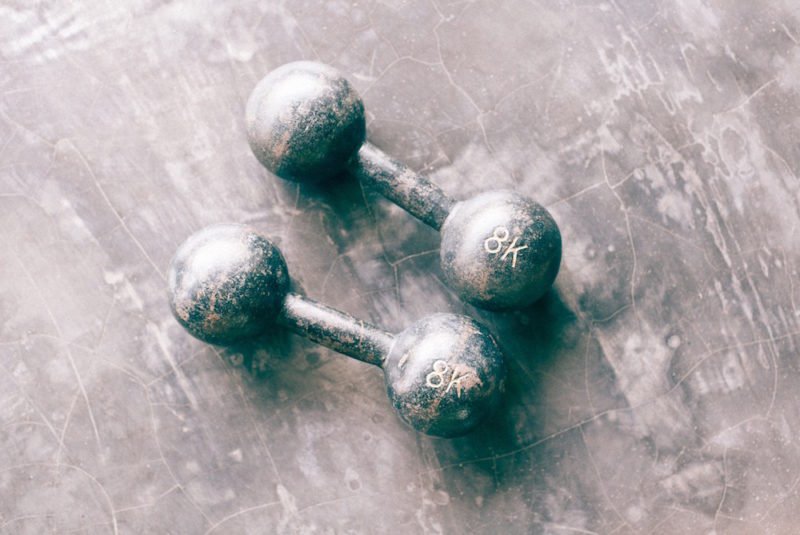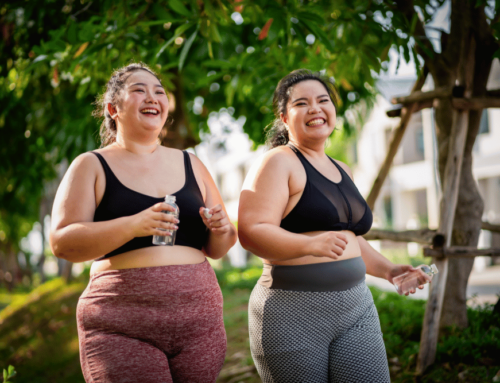 I have a mantra when I exercise: “Exercise to be strong, not smaller.” It’s what gets me through on those days when body image is not exactly in peak form, which I dare say is the case for everyone, at least from time to time. It’s also a way of continuing to deprogram myself from decades of believing that the primary benefit of exercise was weight loss. (My deeply unfortunate forced participation in Weight Watchers at age 16 sparked that notions).
I have a mantra when I exercise: “Exercise to be strong, not smaller.” It’s what gets me through on those days when body image is not exactly in peak form, which I dare say is the case for everyone, at least from time to time. It’s also a way of continuing to deprogram myself from decades of believing that the primary benefit of exercise was weight loss. (My deeply unfortunate forced participation in Weight Watchers at age 16 sparked that notions).
As recently as 10 years ago, every walk, every weight lifting session—every super-intense weekend bellydance workshop that left me feeling like I got hit by a Mack truck—was primarily framed as a means to look better and be smaller. Ah, so much misdirected mental energy!
Shifting definitions of health
Today, I exercise because I enjoy the types of exercise I do, and, yes, because I want to be healthy now and decades from now. That said, what “health” means to me is a different animal from it was back in the days when I was in a pattern of overexercising. (Seriously…on most days of the week I spent a quarter of my waking hours engaged in some form of exercise.) Often the only “positive” emotion I could claim for my efforts was that I felt virtuous. That, dear readers, is not a good recipe for mental and emotional health. It also was no guarantee that I was “disease-proofing” myself, despite what I believed at the time.
My current definition of health very much includes the mental and the emotional. I start every day with sometimes only 10 minutes, but usually 20-30 minutes, because I like it, it makes me feel good, and it’s a nice way to start the day. Somewhere in the middle of the day, I take a much-needed mental break (in the midst of a day of writing and researching) to go for a walk with my husband and dog. On four of those days, we also lift weights (I’ve been trying to my husband to lift weights for decades and I’ve FINALLY done it!). Or should I say, the New York Times did it, with articles like “Preventing Muscle Loss as We Age.”
Rising strong
I myself have been lifting weights since high school, and mostly loving how it made me feel (strong!), even when I was caught up in its appearance-based aspects. From years of doing it and reading about it (at a few points in my life I would spend hours reading bodybuilding books), the finer points of strength training are now intuitive to me: when to inhale/exhale, how tired my muscles should feel on the last repetition, how to protect my lower back during certain moves, why I should do certain exercises before others, where to put mental focus during each exercise.
None of this is intuitive to my husband. He’s like a babe in the woods. Whenever I think “Why don’t you KNOW this?” I remind myself that of course he doesn’t know…because no one ever taught him. Which is why, as much as I heartily advocate strength training for health and healthy aging, it’s important to know that it’s not as DIY as, say going for a walk. It really is important to take a group class or arrange for at least a handful of personal training sessions (which can be costly, it’s true). You can learn not just what to do and when to do it, but how to do it and why you’re doing it. What muscles is this exercise working? How will that benefit me? Why this exercise instead of another that would work the same muscles?
An attitude of gratitude
Despite my regret that for so many years my reasons for exercising were dysfunctional, I don’t regret that I did exercise, because today I am reaping the benefits of those decades of regular movement. (To wit, another recent article in the New York Times, “Regular Exercise May Keep Your Body 30 Years Younger.”) I’m also deeply grateful that my mindset has shifted, and I now see the myriad benefits of physical activity—none of which have to do with being smaller.






